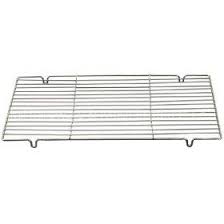garygid
Well-known member
Wire cooling in the LEAF sounds like BS (incorrect information) to me.
It might be difficult for newcomers to sort out what is true?
It might be difficult for newcomers to sort out what is true?

garygid said:Wire cooling in the LEAF sounds like BS (incorrect information) to me.
It might be difficult for newcomers to sort out what is true?
palmermd said:EVDRIVER said:I do need to clarify to avoid confusion about one wire, the wires to the usb port are likely cooled, a computer expert told me that is typical on high-speed connections. I'm sure the CAN bus is as well for speed, surely a loop to the inverter cooler.
I think he was talking about this wire cooling (rack) that comes with the accessory NA721 which is the solar cooking option.

wgs1912 said:It appears that the charger is also cooled. In a video at work it shows coolant lines under the car going into the bottom of the charger.
I believe the service manual said 125,000 for first fluid change and 75,000 thereafter.drees said:You probably don't need to do more than check the fluid levels more than a couple times a year.DarkStar said:The difference in the Leaf is that the coolant isn't under pressure like a traditional engine radiator system, thus it is very unlikely to develop a leak. Sure, you'll have to glance it, but it shouldn't need anything more than annual maintenance.
Coolant these days typically lasts at least 3-years 36k miles before a change - and usually a lot longer. For example, on the Prius, you only need to change the engine and inverter coolant after 10 years / 100,000 miles and every 5 years / 50,000 miles after the first one.
GroundLoop said:Excellent info! Thanks!
I am curious about the design of the cabin heater, and why it benefits from having an indirect (coolant) stage. Why not just resistive heat in the cabin airflow directly? Seems like it would take longer to heat fluid than just glow into a fan.
The A/C compressor.. runs directly of HV battery pack power?
kmp647 said:GroundLoop said:Excellent info! Thanks!
I am curious about the design of the cabin heater, and why it benefits from having an indirect (coolant) stage. Why not just resistive heat in the cabin airflow directly? Seems like it would take longer to heat fluid than just glow into a fan.
The A/C compressor.. runs directly of HV battery pack power?
Heater is safer as water coolant instead of coil , also provides more consistent temp and holds some heat when the heating elemnt is de activated
This is good news
GroundLoop said:kmp647 said:GroundLoop said:Excellent info! Thanks!
I am curious about the design of the cabin heater, and why it benefits from having an indirect (coolant) stage. Why not just resistive heat in the cabin airflow directly? Seems like it would take longer to heat fluid than just glow into a fan.
The A/C compressor.. runs directly of HV battery pack power?
Heater is safer as water coolant instead of coil , also provides more consistent temp and holds some heat when the heating elemnt is de activated
This is good news
I see. A thermal buffer, of sorts. Makes sense if you're trying to keep hot wires out of the passenger area.
Do you know if the heater is also HV powered?
Also, do you know if a service tool (Nissan Consult-II?) is able to adjust the convenience options, like unlocking all the doors together?
Yes (and maybe the motor, but probably just the charger and inverter)edatoakrun said:Is the only purpose of this system to cool the charger and inverter?
Is this system in any way connected to the cabin heater?
Is there a separate coolant ("heat-ant") fluid reservoir for climate control, entirely separate from the coolant system?
edatoakrun said:And there is no heat exchange between the two systems?
garygid said:Some conjecture about it cooling the hump-located Charger, but I doubt it ... but it could. If it does, the coolant pump (and perhaps radiator fan) would need to come on, at least when the charger was getting "too" hot.
In cold weather, when you need heat in the cabin, the main coolant system might be quite cold, so of no use in heating the cabin.
Enter your email address to join: